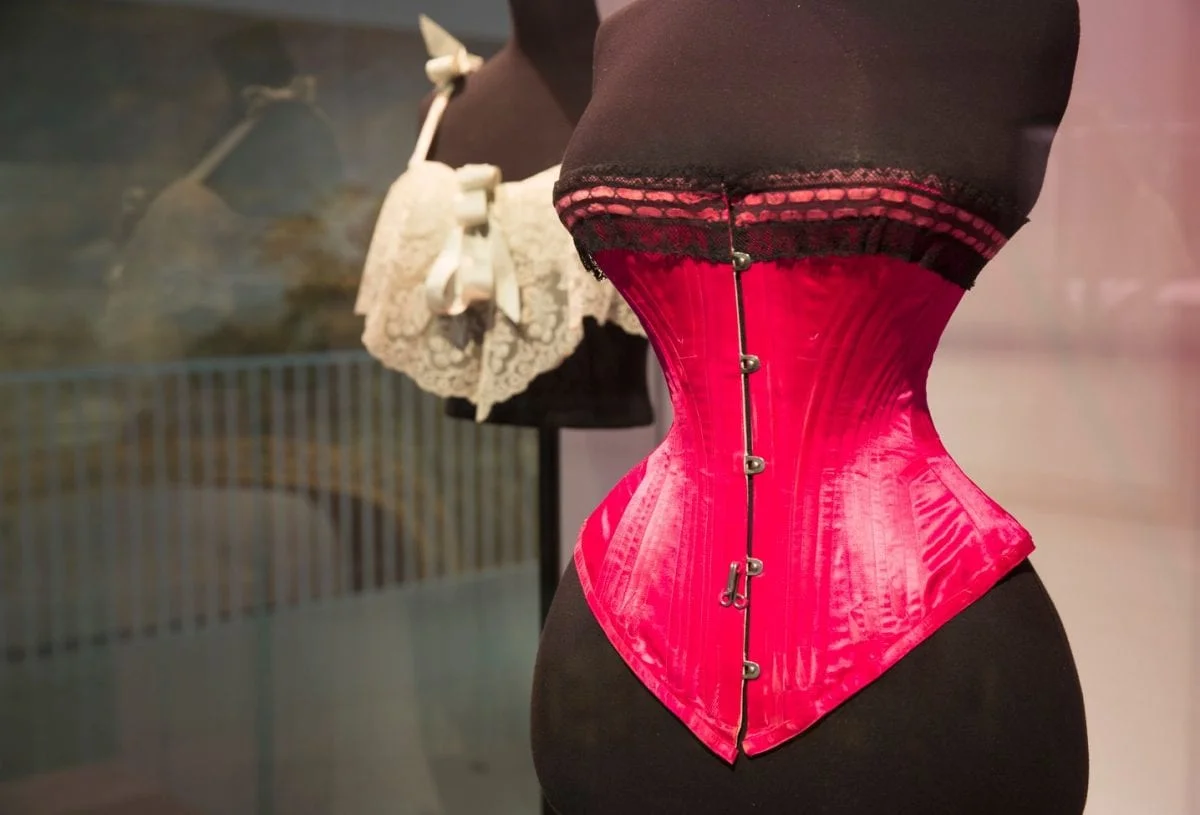Are you a boxers or Y-fronts person? Thongs or bikinis? Sports bra or lace? Today, there’s a vast array of colours, shapes and fabrics on offer when it comes to underwear – particularly that of women.
Underclothes for different bodies, states and activities illustrate not only their diversity and growing specialisation but also their significance in shaping our appearance and presenting our bodies as socially appropriate and (occasionally even) desirable.
But this choice has not always been the case, as a new exhibition on the history of underwear at London’s Victoria and Albert Museum demonstrates. The show charts the development of undergarments in the Western world since the 1700s and their role in crystallising ideas of beautiful and desirable bodies.
Before the Victorian period, the distinctions between men and women’s undergarments were nowhere near as marked as they are today. Items to conceal the genitalia and provide warmth and protection had been worn by both sexes for centuries, as had the hose – the non-elasticated precursor of what we know today as stockings. Equally, both men and women had worn stiffened bodices which supported the back and shaped the body and tight-lacing was intermittently popular since the 16th century.
Then in the 19th century, ideologies of hygiene, concealment, morality and class emerged in parallel with cheaper manufacturing materials and processes which supported mass production. This lead to the introduction of specifically female underpants.
The first specific items of female undergarments – the drawers – entered the British market in the early 1800s. A French import, this undergarment was originally intended for young girls. Prototypes highlighted utility to ensure popular acceptance and safe adoption. A combination of severe winters and medical advice encouraged their acceptance by mature women. But reception was mixed. As late as the 1880s, Cassell’s Magazine recommended that closed drawers rather than flannel petticoats be worn, indicating that even at this stage the petticoat – simply an underskirt – was preferred.
Shaping women
Unlike drawers, which came to be associated with containment and cleanliness, the tight-laced corset, which grew in popularity over the course of the 19th century, had no functional value. An indicator of the class of its wearer, the corset was an essential item of attire for those who wanted to distinguish themselves from women who needed to engage in manual labour. Its shaping of the female body into an erotic object dictated popular codes of sexual desire.
The rise of department stores in the mid 19th century meant that women’s power as consumers was increasingly recognised. This fuelled an increasing elaboration of undergarments as manufacturers strove to experiment with various fabrics and patterns and create products for a variety of budgets and occasions. The proximity of underclothes to the unseen naked body heightened their mystery and seductive appeal, and marketing techniques further enhanced this. These aesthetic ideals were then transferred to the suspender belt and the brassiere in the early part of the 20th century.
It was the invention of vulcanised rubber, together with concerns about tight corseting, that led to these items’ development. By the 1880s suspenders – at first attached to a belt worn over the corset and later onto the corset itself – were championed by the National Health Society as a replacement for constricting garters. But in the beginning the utilitarian function of the suspenders shadowed any erotic connotations the undergarment may have inspired. Turn of the century advertising for one such item “The Portia Combined Stockings Suspender and Shoulder Harness” describes it as “very useful for little boys”.
Splitting the corset
At the turn of the 20th century the corset was split into two different undergarments to improve movement in the back and waist. But the modern suspender belt and brassiere did not enter mainstream consumption until the 1920s, when an increase in stocking production and changes in female dress popularised the lighter items. Stockings made of artificial yarn, first manufactured in the US in 1912, created lookalike silk stockings. For the first time, glamorous hosiery at reasonable prices was available to working girls.
The proliferation of elastic materials and the introduction of nylon in the 1940s – a new artificial fibre which was superior to widely used rayon in weight, versatility and strength – contributed to the post war boom in these garments. By the 1950s, the film industry had helped fix the erotic ensemble of suspender-belt and stockings, and this iconography was equally reflected in sexually explicit material, much in the same way in which early Victorian postcards displayed tight-laced models in various states of undress.
But such glamorous lingerie was soon to be surpassed by functional, minimalist wear, and stockings by tights, the latter introduced – like the 19th century drawers – as an innovative item for children’s wear before their adoption by adult consumers. The stockings and suspender-belt combo was increasingly associated with sexual license and cheap thrills. Stockings dropped from holding 72% of the market in 1964 to a mere 5% in 1971.
The market, though, has since revived. Celebrity endorsements helped introduce stockings and suspenders to younger women and diminish any unsavoury connotations. And retro trends and consumers’ desire to feel feminine and attractive have also contributed to this revival – no doubt what Agent Provocateur hopes to tap into by sponsoring the V&A exhibition.
The exhibition, Undressed: A Brief History of Underwear, is at the V&A until March 12 2017.
Lecturer in Sociology, University of Exeter
![]()





